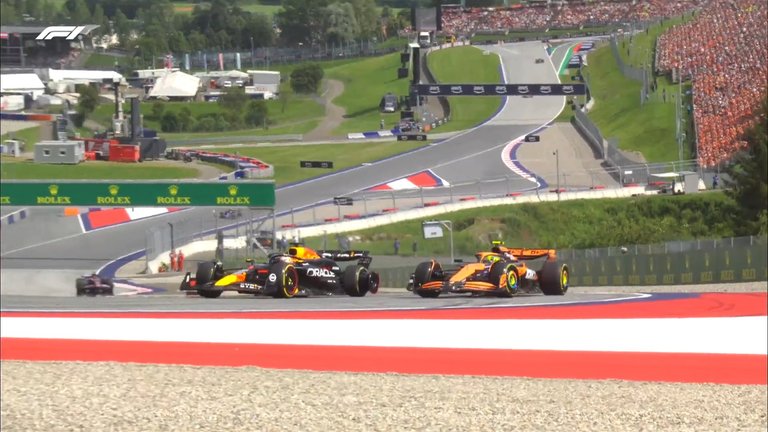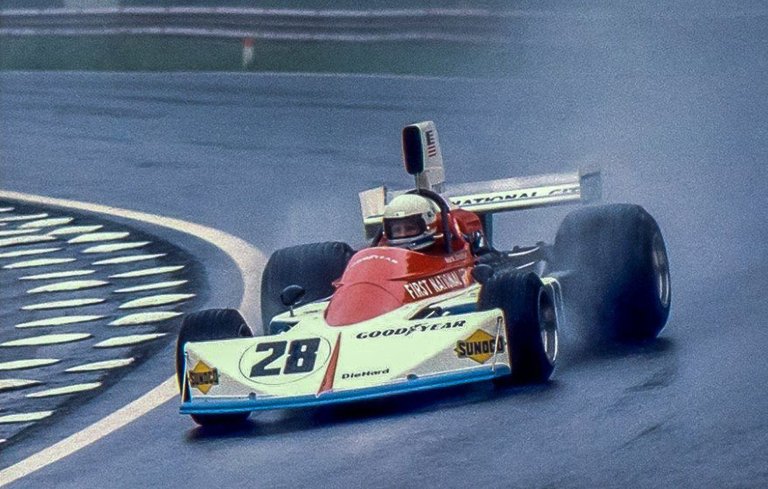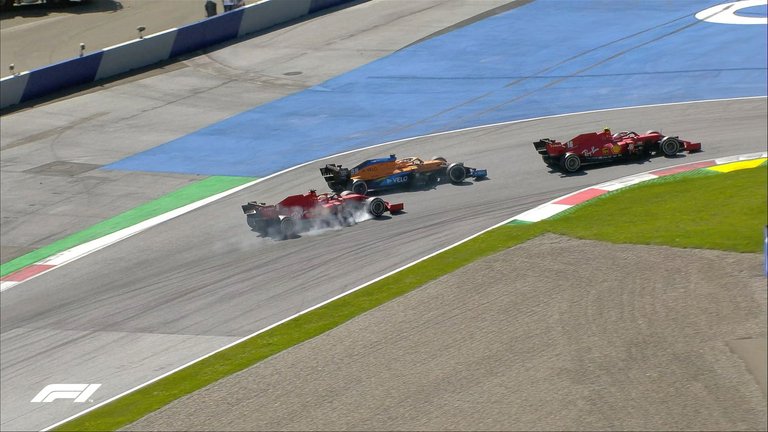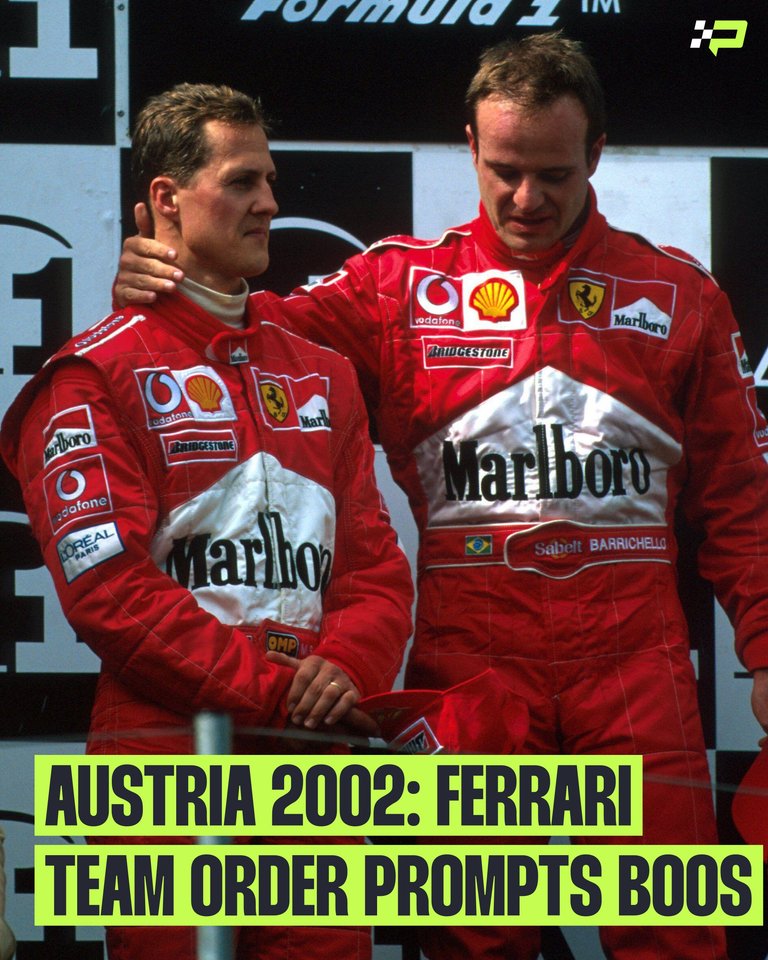Recuerdos de Austria (SPA-ENG)

Para aquellos años en que comenzó a disputarse el Gran Premio de Austria de Fórmula Uno yo ya había ingresado al maravilloso mundo de esta categoría impulsado por Carlos Reutemann, un gran piloto que venía a recuperar un lugar que en su momento había ocupado otro, que a la postre demostró ser insustituible: Juan Manuel Fangio, no solo fue imposible de reemplazar por otro piloto argentino sino por conductores de cualquier nacionalidad, tanto que costó casi 50 años para que alguien quebrara el record de campeonatos ganados que el Chueco de Balcarce supo conseguir.
Pero el "Lole" Reutemann recién comenzaba y todos aquí estábamos ilusionados con que emulara a Fangio, no lo logró, como tampoco lo hicieron otros 1000 pilotos de todo el planeta que han corrido en la Fórmula Uno. Hasta el momento solo 2 han podido.

Volviendo al tema del circuito austríaco hoy en día llamado Red Bull Ring, comenzó a ser parte del calendario del campeonato de F1 en el año 1970, un par de temporadas antes que Reutemann hiciera su aparición en la máxima categoría, pero no fue hasta 1975 cuando tuvo su primer accidente importante y además trágico (el único hasta el presente), el piloto estadounidense Mark Donohue, conduciendo un March-Ford con el número 28, se estrella contra un guard-rail en el warp-up y atropella a dos auxiliares de pista, Manfred Schaller fallece en el momento y el piloto 2 días después.
En aquella trágica carrera participó el piloto argentino quien finalizó en la posición 14 con varios problemas en su Brabham. Otro hecho destacable fue la participación de Lella Lombardi, una de 5 mujeres que se han subido a un F1 en toda su historia. Esa carrera repartió solo la mitad de los puntos para cada posición ya que debió acortarse en la cantidad de vueltas estipuladas por una intensa lluvia.

En 1987 hubo varios accidentes, aunque no se lamentaron daños físicos importantes para los pilotos y auxiliares, en esa carrera hubo 7 abandonos (Patrese, Alboreto, De Cesaris, Warwick, Cheever, Berger, Campos y Nannini) y se menciona como una probable salida de ese circuito del calendario anual motivado por su peligrosidad y estado de la pista.
Remodelado y acortado en su extensión vuelve al calendario regular, en 2001 se producen nuevos múltiples incidentes y abandonos, el más importe un toque entre Montoya y Villeneuve que obligó al abandono del colombiano, en esa carrera hubo otros 10 abandonos entre los más destacados Fernando Alonso, Jenson Button y Mika Hakkinen. Tampoco aquí hubo lesiones de importancia, aunque quedó en evidencia que los toques y accidentes en carrera pueden ocurrir pese a las mejoras en los circuitos.

En 2002 hubo otro incidente, aunque esta vez no por toques ni salidas de pista, Ferrari ordenó a su piloto Rubens Barrichello dejar pasar y ganar la carrera a su compañero Michael Schumacher, todo ocurrió en la última curva antes de la bandera a cuadros por lo que el hecho tuvo mayor visibilidad. Justamente en el día de ayer por TV recordaron este incidente y se pudo ver al alemán en el podio entregarle el trofeo de ganador al brasileño en un buen gesto indicando que era el merecedor, aunque los puntos no se modificaron. Muchos opinan que este incidente fue la excusa para volver a quitar al circuito del calendario regular. Comprado por Red Bull y vuelto a modificar, la carrera de Austria recién volvió en 2014.
En 2016 otro incidente entre dos pilotos importantes y compañeros de equipo en Mercedes, Lewis Hamilton y Nico Rosberg se tocan en la última vuelta luchando por la victoria, el alemán pierde el alerón y se retrasa, Hamilton gana la carrera y Rosberg es penalizado por esa acción.
En 2020, luego del receso obligado por el COVID se corre en Austria y quizás debido a la ansiedad provocada por la pandemia o las ganas de correr (fue la primera carrera de la temporada y en Julio), se produce una de las carreras más caóticas de los tiempos modernos de la F1, solo 11 terminaron luego de varios encontronazos y muchas polémicas como los incidentes y toques entre Vettel y Sainz o el de Stroll y Ricciardo.
Y la última carrera con incidentes importantes fue la de 2021 donde nuevamente los contactos polémicos estuvieron a la orden del día, primero entre Norris y Pérez y luego el mexicano con Leclerc. Hubo múltiples penalizaciones y polémicas tanto por los toques como por exceder los límites de pista.
Una larga historia la de Austria, como para ir palpitando una carrera que seguramente será interesante y disputada, al menos eso esperamos.
Memories of Austria
By the time the Austrian Formula One Grand Prix began, I had already entered the wonderful world of this category, driven by Carlos Reutemann, a great driver who came to reclaim a place once occupied by another, who ultimately proved irreplaceable: Juan Manuel Fangio. Not only was he impossible to replace with another Argentine driver, but also with drivers of any nationality, so much so that it took almost 50 years for someone to break the record for championship wins that Chueco de Balcarce once held.
But "Lole" Reutemann was just starting out, and everyone here was hoping he would emulate Fangio. He didn't succeed, nor did 1,000 other drivers from around the world who have raced in Formula One. So far, only two have been able to.
Returning to the subject of the Austrian circuit today called Red Bull Ring, it began to be part of the F1 championship calendar in 1970, a couple of seasons before Reutemann made his appearance in the top category, but it was not until 1975 when it had its first major and tragic accident (the only one to date), the American driver Mark Donohue, driving a March-Ford with the number 28, crashed into a guard-rail at warp-up and ran over two track attendants, Manfred Schaller died at the time and the driver 2 days later.
The Argentine driver participated in that tragic race, finishing in 14th place with various problems in his Brabham. Another notable event was the participation of Lella Lombardi, one of five women to have driven an F1 car in its entire history. That race only awarded half of the points for each position because it had to be shortened by the stipulated number of laps due to heavy rain.
In 1987, there were several accidents, although no significant physical injuries were reported for the drivers and crew members. Seven retirements occurred in that race (Patrese, Alboreto, De Cesaris, Warwick, Cheever, Berger, Campos, and Nannini), and the circuit is mentioned as a possible departure from the annual calendar due to its dangerous nature and track conditions.
Remodeled and shortened, it returned to the regular calendar. In 2001, multiple incidents and retirements occurred again, the most significant being a collision between Montoya and Villeneuve that forced the Colombian to retire. That race saw another 10 retirements, including Fernando Alonso, Jenson Button, and Mika Hakkinen. There were no significant injuries here either, although it became clear that collisions and accidents in races can occur despite improvements to the circuits.
In 2002, there was another incident, although this time not due to collisions or track exits. Ferrari ordered its driver Rubens Barrichello to let his teammate Michael Schumacher pass and win the race. It all happened on the last corner before the checkered flag, so the incident gained greater visibility. Just yesterday, TV reported on this incident, and the German could be seen on the podium presenting the winner's trophy to the Brazilian in a gesture of gratitude, indicating that he deserved it, although the points tally remained unchanged. Many believe this incident was the excuse to once again remove the circuit from the regular calendar. Bought by Red Bull and modified again, the Austrian race only returned in 2014.
In 2016, another incident occurred between two important drivers and Mercedes teammates: Lewis Hamilton and Nico Rosberg. They collided on the final lap while fighting for victory. The German lost his wing and was delayed. Hamilton won the race, and Rosberg was penalized for his actions.
In 2020, after the forced COVID break, the race took place in Austria. Perhaps due to the anxiety caused by the pandemic or the desire to race (it was the first race of the season and in July), one of the most chaotic races in modern F1 took place. Only 11 races finished after several clashes and many controversies, such as the incidents and contacts between Vettel and Sainz or that between Stroll and Ricciardo.
And the last race with major incidents was the 2021 race, where controversial contacts were once again the order of the day, first between Norris and Pérez and then the Mexican with Leclerc. There were multiple penalties and controversies for both contacts and exceeding track limits.
Austria has a long history, enough to anticipate a race that will surely be interesting and hard-fought, at least we hope so.
Héctor Gugliermo
@hosgug